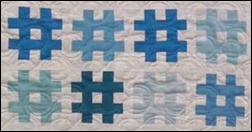Eric Widen is co-founder and CEO of HBI Solutions of Palo Alto, CA.

Tell me about yourself and the company.
I have a long background in healthcare, over 25 years now. I’ve worked and focused on solving problems in healthcare, typically using data. We started HBI Solutions with a more sophisticated bent on using data and data science techniques to solve problems in healthcare. That focus has been on predictive insights on patients and populations, so that population managers and even individuals can understand insights into their health that they wouldn’t know otherwise. We use data science methods to do that.
What are the implications of predicting the outcomes of patients who may not even know they have a problem, as you did in applying machine learning to EHR data to identify people likely to eventually have chronic kidney disease?
That’s the million-dollar question. The punch line is, what do you do once you know this information? Our clients are focused on low-hanging fruit from a risk standpoint. They’re working closely on readmission rates for acute settings.
We have two flavors of risk models. One is the acute setting, where our insights predict what could happen before and immediately after discharge. It’s typically an acute team or a post-discharge transition and care team that is focused on things like readmissions, and inside the hospital, sepsis and mortality.
The other models are population-based models. You want to predict what’s going to happen in the future to patients who are healthy at home. The chronic kidney disease, CKD, model that you referenced is one of those. But by and large, organizations are largely focused on utilization and cost as the starting risk models. They target patients that are at risk for ED visits, inpatient visits, or high costs, then proactively enroll them in care programs.
Our more savvy clients are starting to get into disease models. CKD is one of them. But more common use cases involve risk of mortality, which was the subject of a paper we published. We’ve had organizations looking at the risk of death for a patient in a future 12-month period and proactively teeing up discussions about end-of-life and palliative care. We have a heart clinic focusing on getting patients who are at elevated risk for a heart attack into the clinic more frequently than they would otherwise.
We said in our mid-2016 conversation that CMS’s excitement about preventing readmissions would probably end up being more tactical than strategic, not really changing outcomes as much as pushing costs around. What have we learned from trying to fix a problem with what might be a blunt instrument?
A key performance indicator that is put into place by regulatory agency that includes penalties and economic implications always tends to have unintended consequences. With a laser focus on something like readmission rates, you’re looking only at a 30-day window post-discharge. The health of those people continues forever after that.
It’s more appropriate to understand all the risk for an individual. Not only within that 30-day transition and care period, but also for the next year and multiple years after that. You get people into more of a comprehensive risk management program to bend the cost curve longitudinally over time and to take care of all the patient’s risks via care management, not just the 30-day readmission risk. Day 31 and after is as important more important than those 30-day windows.
CMS, Joint Commission, and others have come up with ideas that sound naturally good, but without having data behind them. How should those organizations use the same data science as your customers?
It’s not there yet, obviously. The other unintended consequence is the administrative burden that is bestowed upon clinicians and healthcare organizations to meet these quality markers. It’s a heavy burden and a heavy lift and it doesn’t always lead to high-quality care.
Our philosophy as a company is that we purposely didn’t start with regulatory measurement, or any of those, as a focus of the company. We do those things because organizations have to do them. But our philosophy is around two markers — are we reducing the cost to manage patients and are we getting patients healthier?
As the risk goes down for things like readmission rates, utilization of the ED, mortality, or for having a heart attack, patients are actually getting healthier and moving towards an improved outcome. We’ve had clients use our risk scores as a marker to graduate people from care programs. As their risk goes down, they’re getting healthier and they no longer need an aggressive care management approach. They are closer to self-managed care.
I don’t know how this will affect how a regulatory agency thinks about care, but we have progressive organizations thinking about care in that way. Keeping their eye on the ball on a couple of important markers that are really getting people healthier. As people get healthier, they use fewer resources over time. We’re starting to get into the measurement of the cost effectiveness of this approach.
In healthcare, however, spending money to improve someone’s health today might mean someone else gets the payoff decades letter when the patient has changed jobs or insurers.
There is that kick-the-can-down mentality a little bit in the commercial markets. However, Medicare is the largest payer and people consume the most of their costs and incur most of their diseases as they stay in those programs longer. With managed Medicare, Medicare Advantage, and Medicare HCO plans, you get more of a longitudinal outlook on patients. They stay in the same plan or program. We’re targeting those types of organizations, where those incentives are aligned, because it’s a better fit.
I have seen in the commercial space exactly what you’ve described, the “it’s not our problem” approach. They are more focused on short-term risks, more interested in what could happen in the next 6-12 months instead of the next 5-10 years for that patient.
What is your most impressive customer outcome?
It’s a mix. Organizations that have been with us the longest have shown good longitudinal outcomes in reducing ED visits and readmissions. That was their largest focus, and remains their focus, because they can put their arms around that and put in programs to bend those curves.
We can look to the future for graduating people from care programs, Then we can develop, for example, more mental health-based risks. Getting people to that point of self-help to lower their rate of suicide and opioid abuse. That’s the next wave for us, as the way people think about care becomes more sophisticated. We’re not there yet. That’s our future direction.
Beyond Medicare, the VA has the incentive to pay attention to long-term patient outcomes and to implement mental health programs. Have they expressed interest?
We’ve had several conversations with the VA through one of our partners, InterSystems, which has a long relationship with the VA. We have the ability to deploy into existing technologies as smart engines behind the scenes. We can work with any workflow platform. We plan to work with the VA in the future, but nothing is in place yet.
What data elements do you wish you could get but can’t?
Our approach is to give us whatever data you have and we’ll generate the best insights on your population or on you as an individual. As we look to the future, we’re starting to work with more partners. We’ll announce this as time goes on, but these partners have access to different types of datasets. We have worked with what’s generally available in the electronic medical record and in claims systems. We’ve added outside data sources that we can get from the federal government, like social determinants and things we can add in at the ZIP code and Census Tract level.
We’ve been pitching ourselves as a population health program, but as we look at the future and getting more towards the consumer, we’re starting to work with different datasets that would allow us to develop new diagnostic screening and/or risk tools. Developing tests that don’t exist today. We could, with a mass spectrometry partner, develop analysis of proteins, lipids, and metabolites within the blood itself. It’s new data that hasn’t been harnessed, other than in research settings at a very small population level of tens or hundreds of patients.
We’ve been analyzing millions of patients in a lot of our datasets. As we work with these new partners, they’re looking to secure large population samples in tandem with EHRs in the US, but more globally. Our metabolic makeup changes at a detailed level as we exercise or enter new nutrition programs. You can measure that on a day-to- day or week-to-week basis and pick up these signals. This is really new and interesting to us. It’s the same repeatable process around machine learning that we apply to other datasets. But getting into this, we can start developing new tests in the market.
An example is a newborn screening test, where researchers who work at HBI have, in the academic setting at least, identified for every pregnant woman their likelihood of pre-term. If you’re more likely to deliver pre-term, then you will enter a different care program. Any obstetrician or pregnant woman would want that test. We want to develop tens or hundreds of those types of tests.
Another example of high-throughput analysis of mass spectrometry is diabetics whose glucose and A1C markers are “normal.” We can find that 20, 30, or 40 percent of that “normal” population is actually at risk by measuring the proteins and the metabolites within the blood. This is a new direction for HBI. It doesn’t take away from our current direction, it’s just a new channel that we’re going after. It enhances population risk management, but individual risk markers will be a more meaningful focus for us.
How can we separate the real deal from the posers in the HIMSS19 exhibit hall, where every vendor will suddenly claim that their old products are now powered by machine learning, AI, and analytics?
We pride ourselves on being a no-BS company, rolling up our sleeves and working with clients to get them better technology to make the doctor’s job easier and to get patients healthier. We’ve always taken that as a focus. We can differentiate by giving you a list of physicians who are using our technology, pointing to research papers, and putting you in touch with care managers who are using our product daily to the health and outcomes of patients. A lot of vendors don’t have those three in place.
Do you have any final thoughts?
We have been focused on US problems and issues, which have their own government and regulatory components that drive how you think about entering the market here, But if you take a general view of how to use technology to get patients healthier at a lower cost, it’s relevant to US. There’s no shortage of studies on how upside-down the US is on outcomes and cost.
But it’s relevant across the globe as well. Other countries are getting richer and eating more poorly. People there with more disposable income want access to more types of healthcare. It’s a global problem as well. It’s important to think about how technology applies not only in the US, but globally. That’s our approach in developing solutions that are relevant to people.
Comments Off on HIStalk Interviews Eric Widen, CEO, HBI Solutions



































































Re: Dr Z. Great story, but whatever happened to professional courtesy???